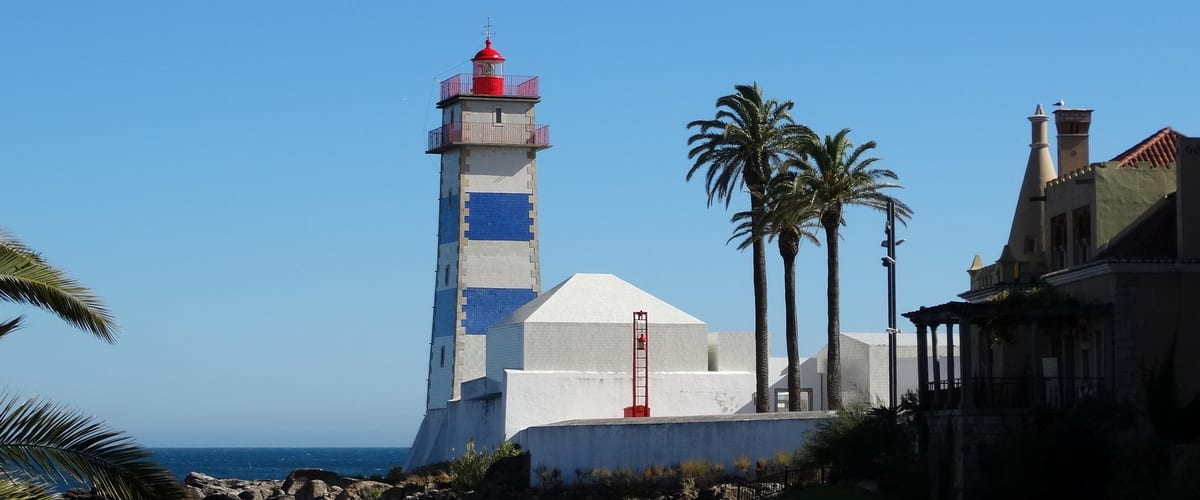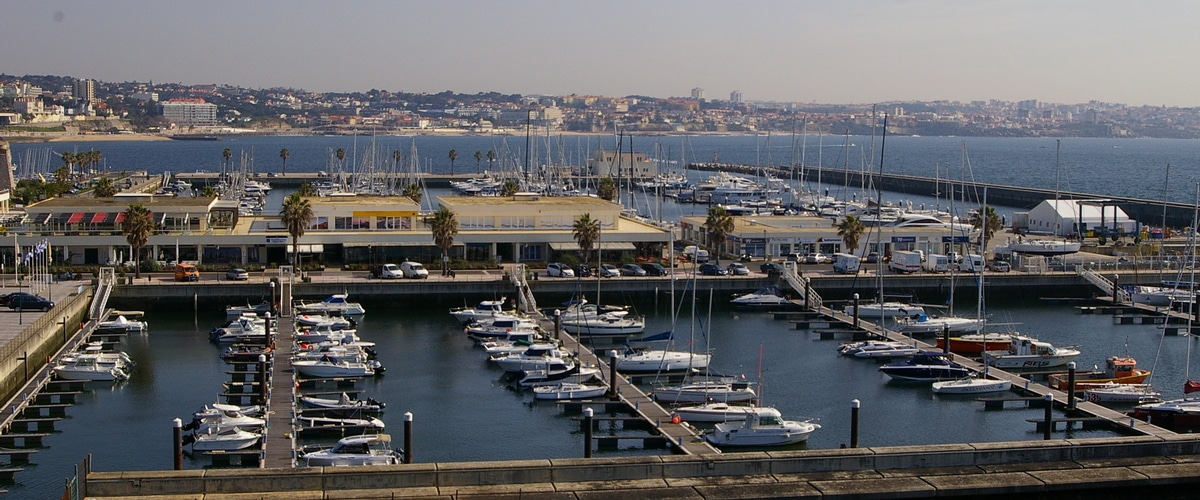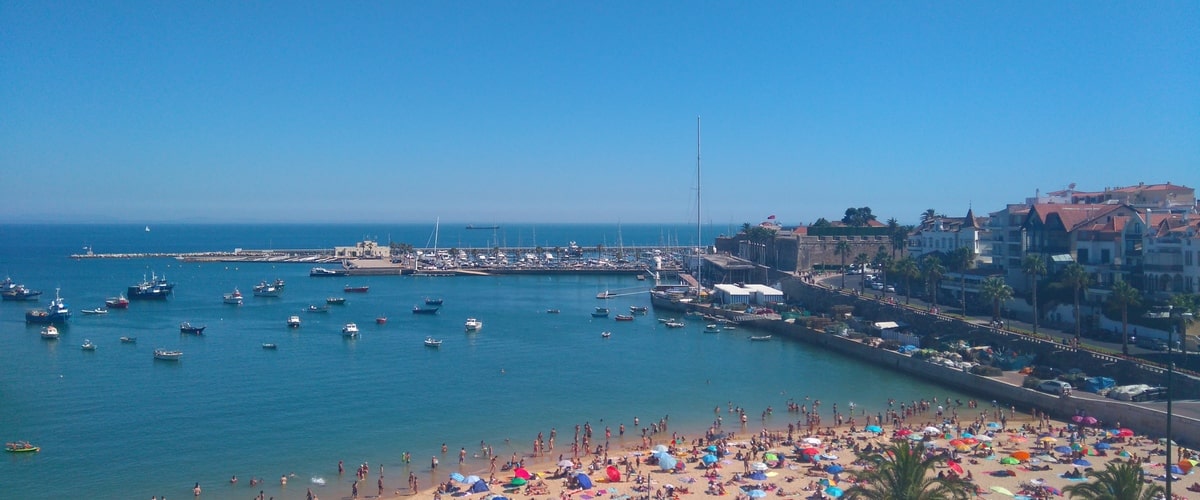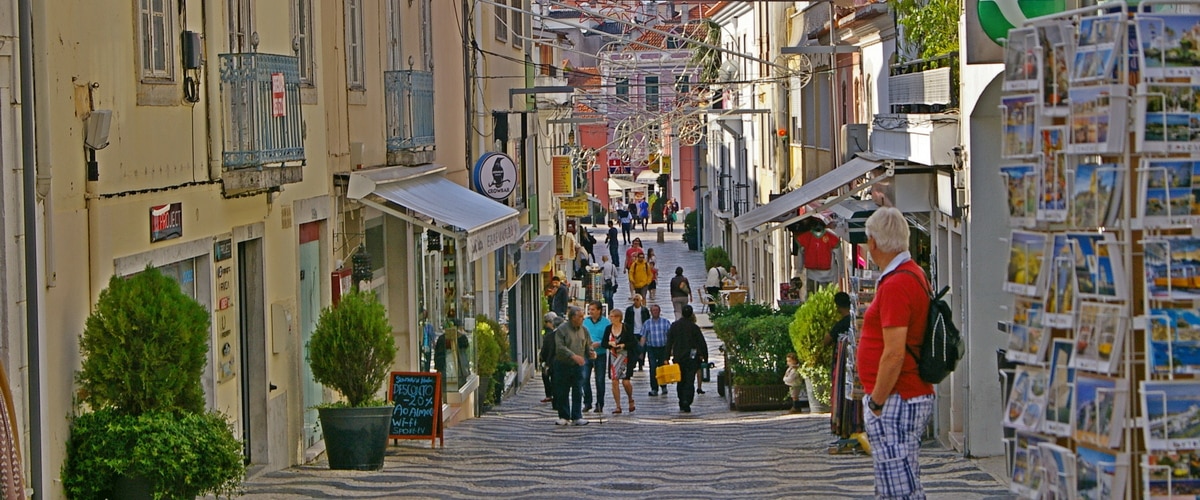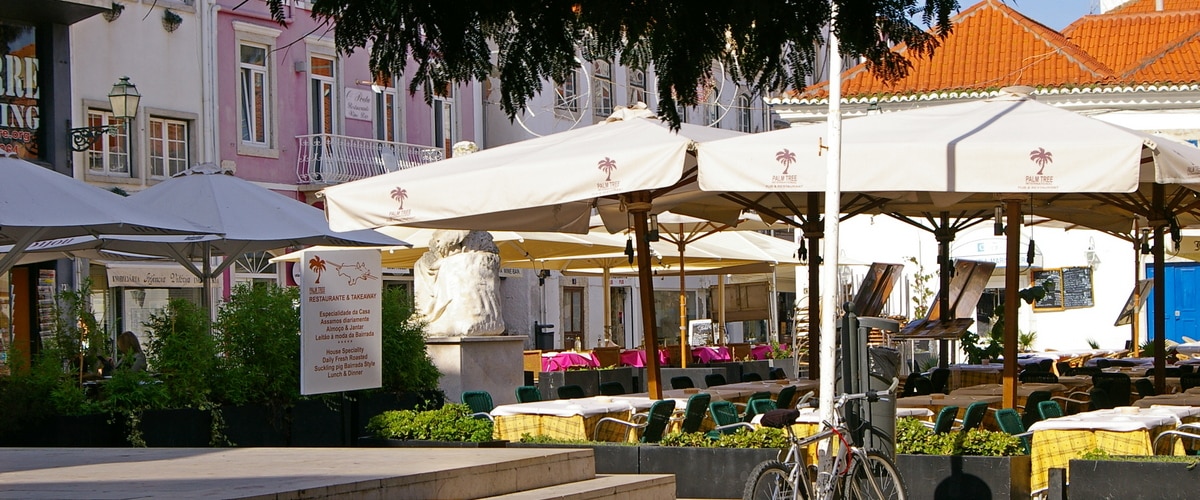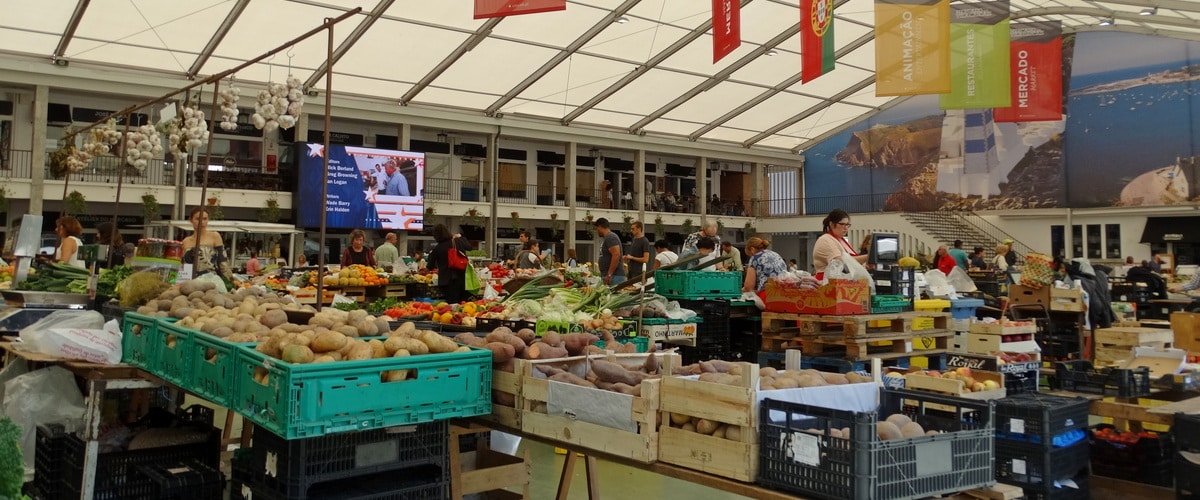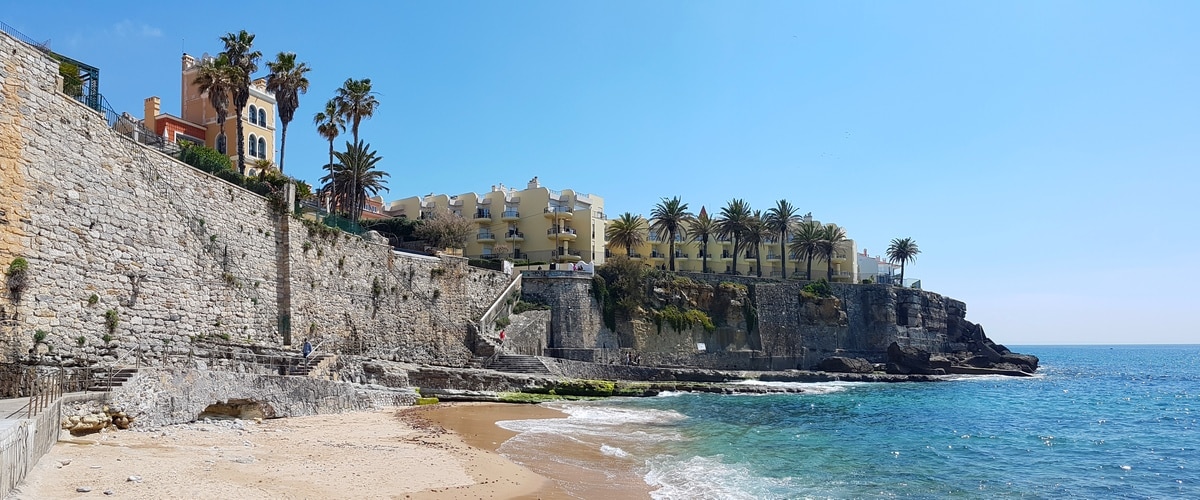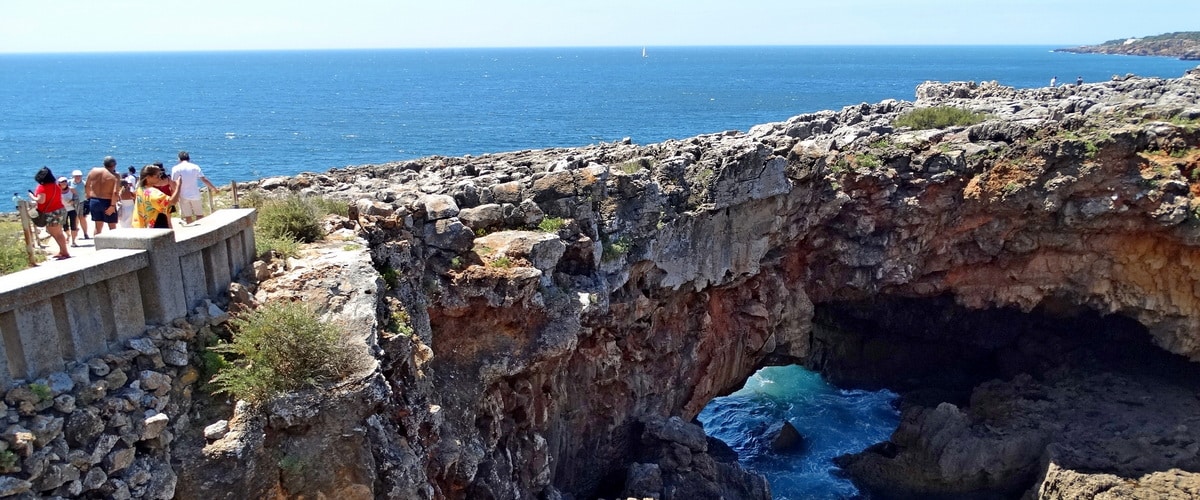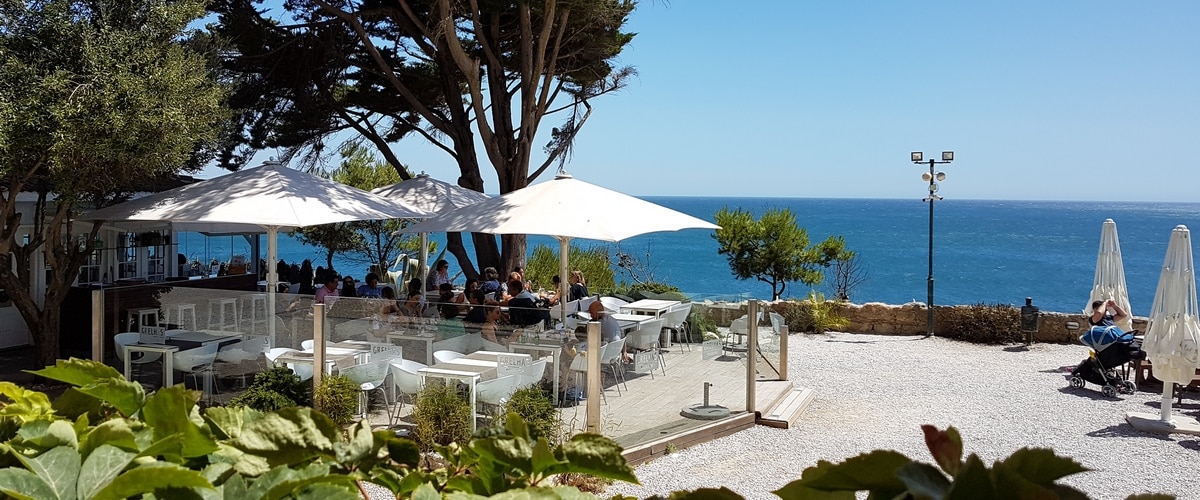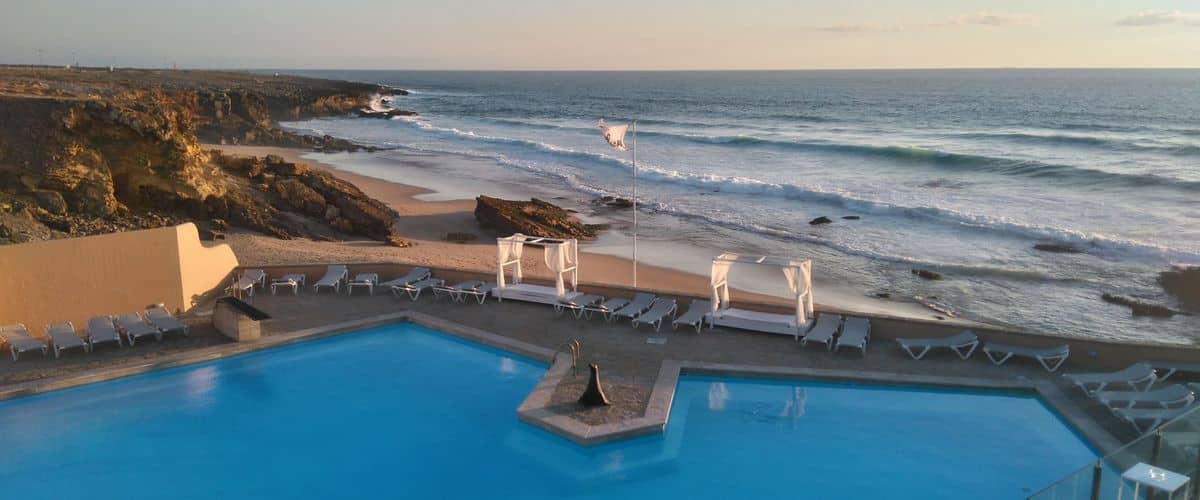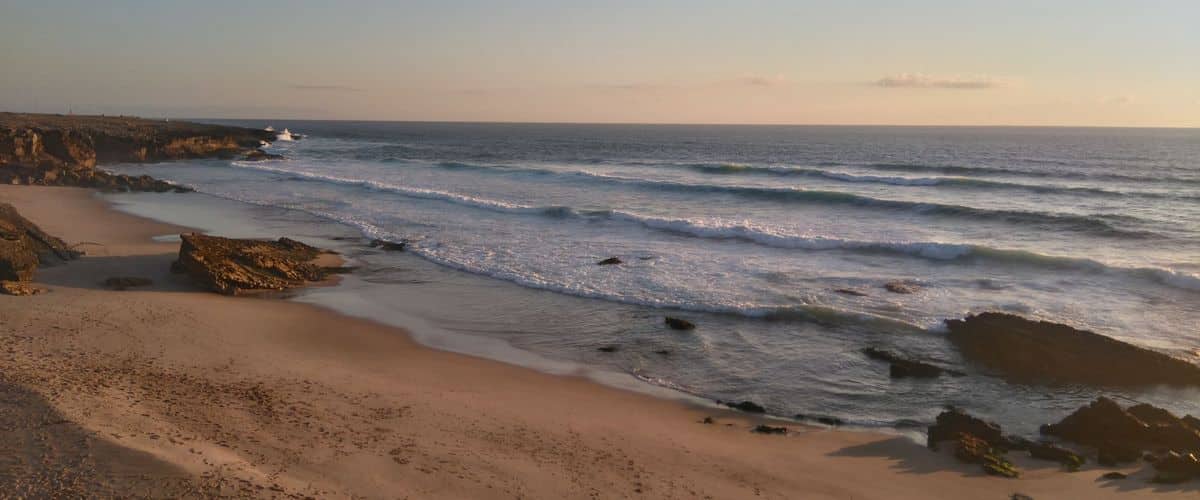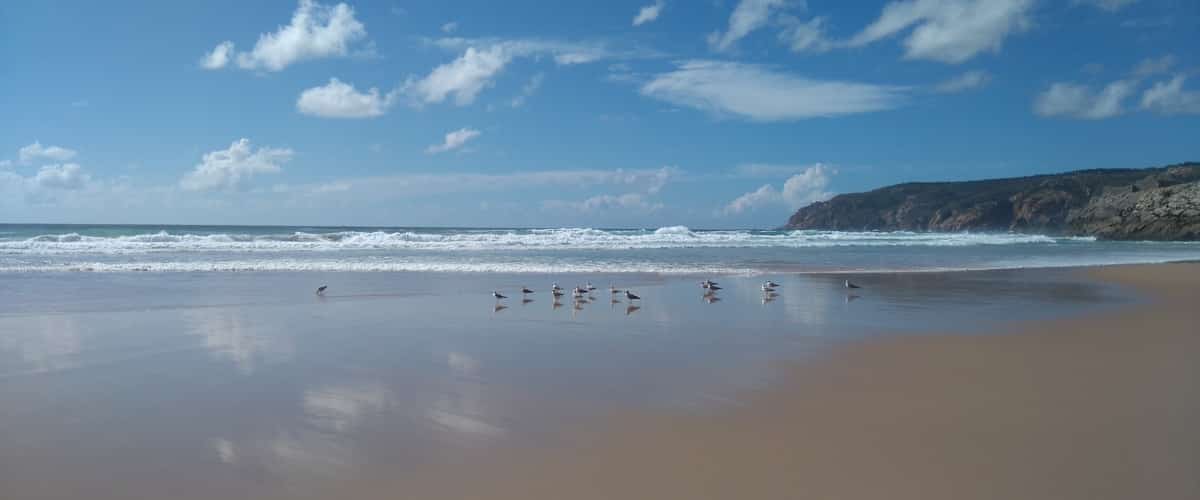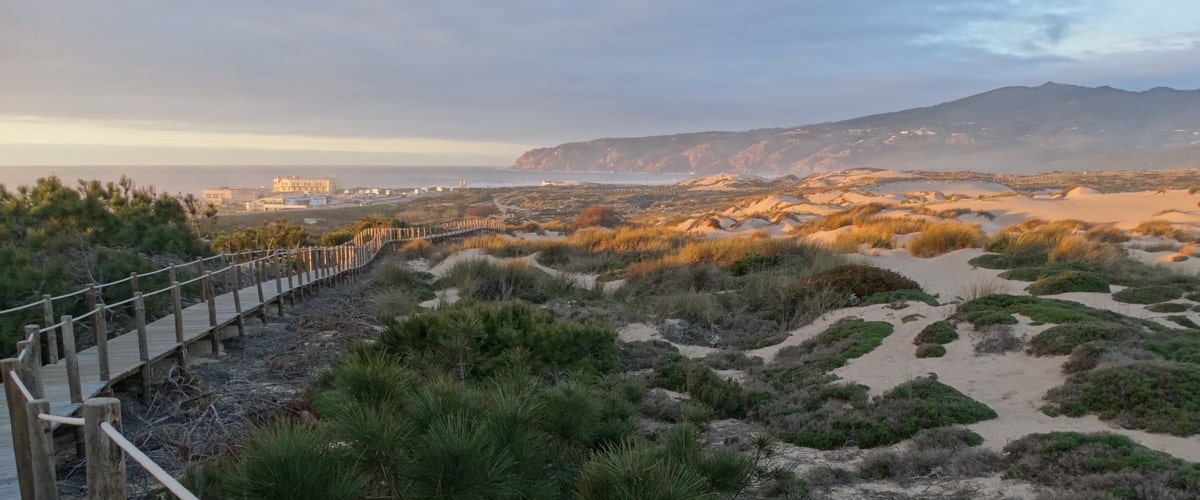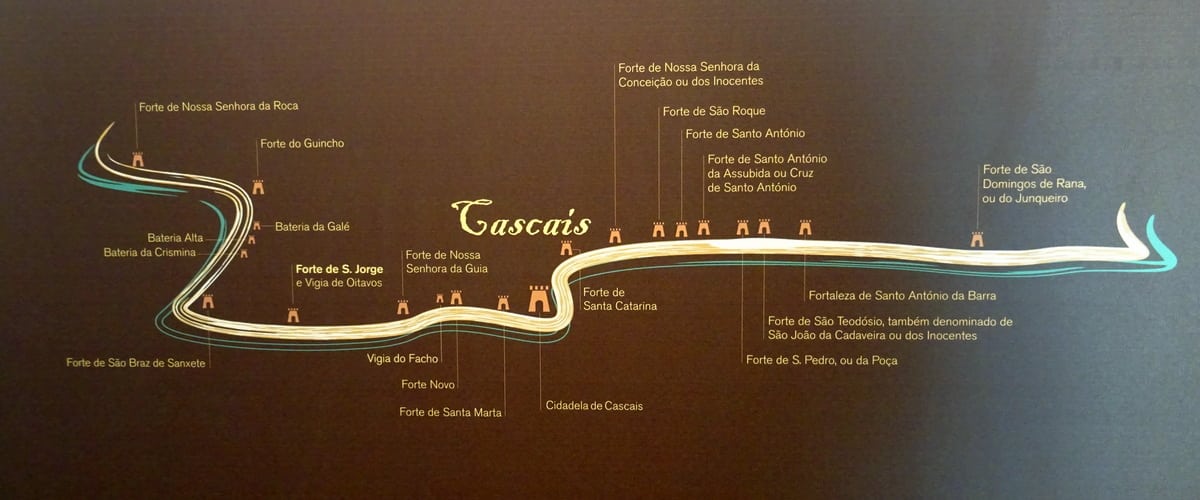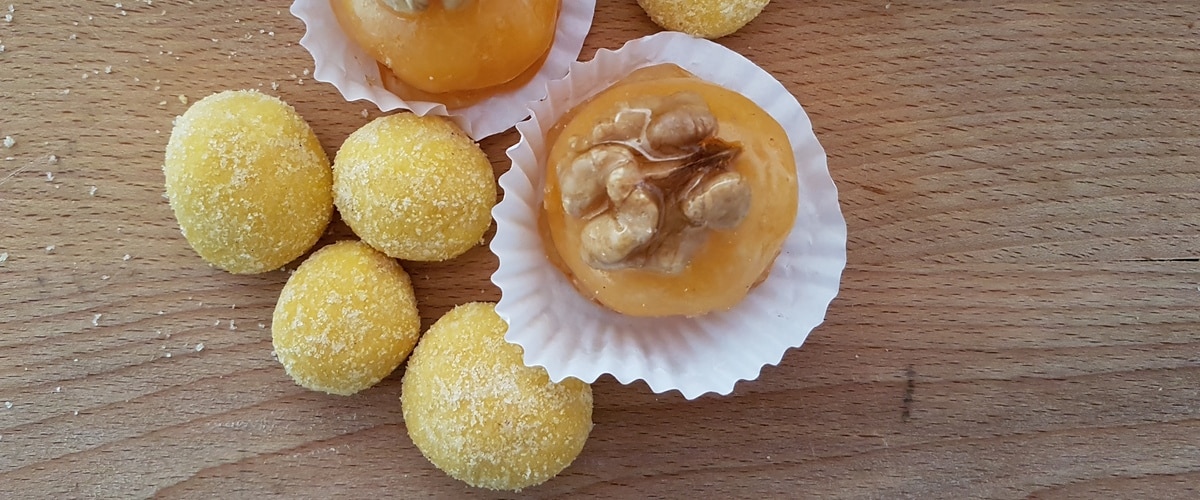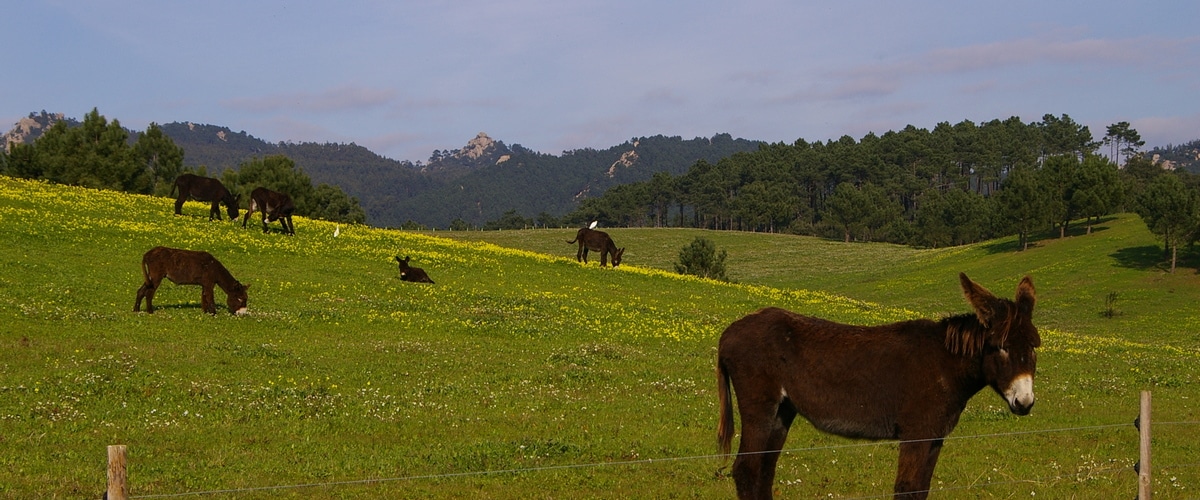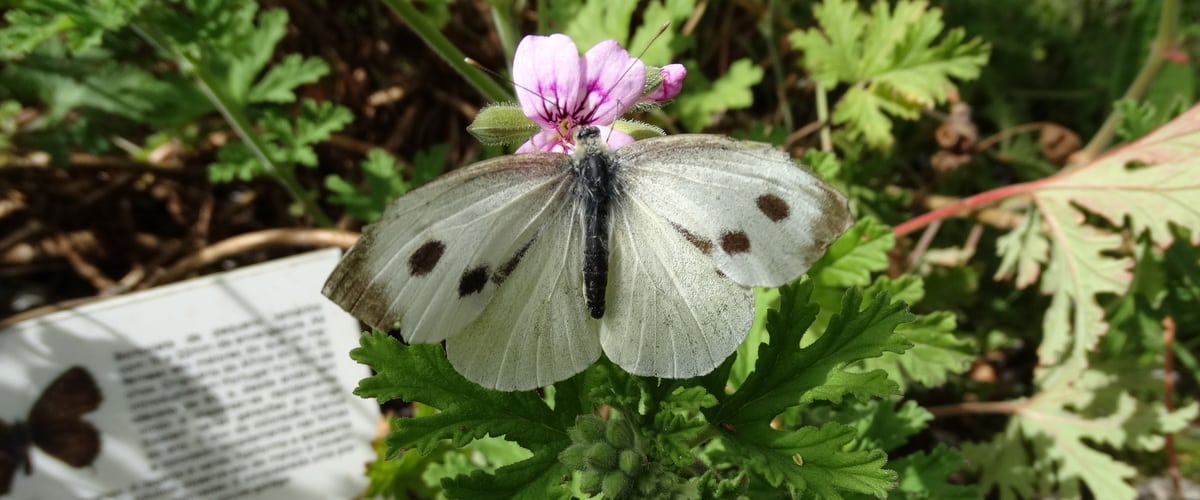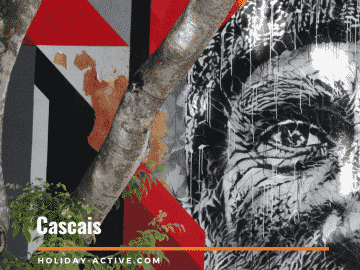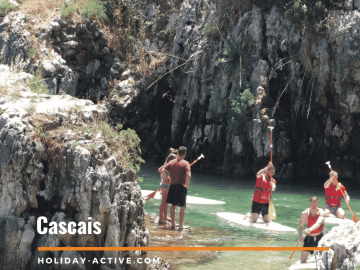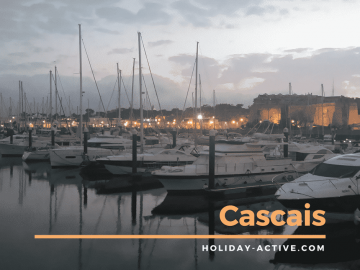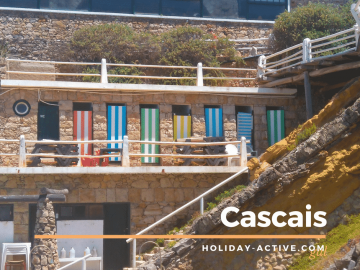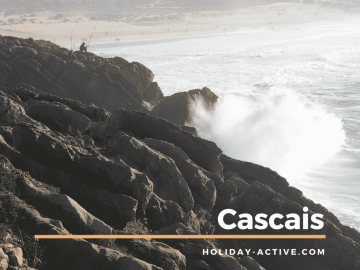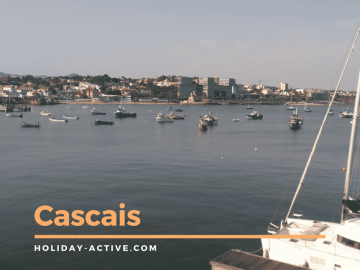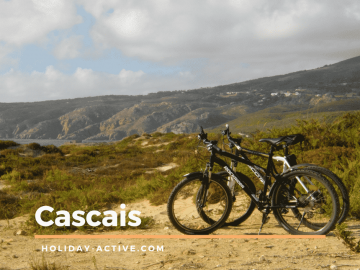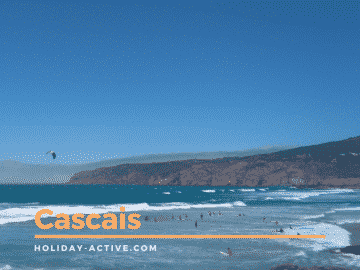Cascais
Cascais is 30 minutes away from Lisbon and another 20 from Sintra.
A former fisherman’s village, with 30 km of coastline, it is bathed by the blue Atlantic Ocean and protected by the mountain range of the Serra de Sintra. Cascais preserves the charm of past times when it was the summer destination of the Portuguese Royal Family while attaining a cosmopolitan vibe.
Cascais retains a warm beachy holiday feel, but it’s more than a summer resort, for it has all its year-round residential homes and ongoing entertainment.
Cascais is a village that can be visited in a day, but where you may wish to stay forever
What to visit in Cascais
Museum Casa das Histórias
Casa das Histórias is a Museum dedicated to Paula Rego, a famous Portuguese artist.
The Museum itself is also an art piece designed by the Portuguese Pritzker Prize winner Eduardo Souto de Moura. It houses 620 paintings, drawings and engravings, many of them donated by Paula Rego herself, and some works of her husband, Victor Willing.
Castro Guimarães Museum
Castro Guimarães Museum, the former “Torre de S. Sebastião” is a beautiful and eclectic house from the end of the 19th century, built above a small cove of transparent waters, by Jorge O’Neill.
The Conde de Castro Guimarães bought the house in 1910 and left it to the people of Cascais when he died. The title of Conde (Count) was given to Manuel Inácio Castro Guimarães, by D. Manuel II, in appreciation for the financial aid he occasionally gave to this Royal Family.
The museum’s exhibits include an impressive art collection, rare pieces of Indo-Portuguese furniture, a few prehistoric archaeological remains and a library
Surrounding the Castro Guimarães Museum is the Marechal Carmona Park. Great for cooling down beneath the leafy trees, fresh grass and refreshing ponds. Here you’ll also find a small chapel, some beautifully painted azulejo tiles, a children’s playground and a snack bar.
The Bridge
The bridge between Casa de Santa Maria and Museu Castro Guimarães was built in 1870. With 32m long it is said that it is one of the first bridges over the Atlantic Ocean
It is here, on the beach below that the river Ribeira dos Mochos meets the sea. However, on high tide, the ocean makes it’s way up, so perhaps you may now claim to have walked over the Atlantic.
Maybe not, but it does make visiting Cascais more daring, just make sure you do it during high tide!
House of Santa Maria
One of the most emblematic houses in Cascais landscape
In the late nineteenth century, Jorge O’Neil, an aristocrat who made his fortune in the tobacco industry, acquired some land near Santa Marta. Where he built Tower de São Sebastião – now the Condes de Castro Guimarães Museum – and, a few years later, the House of Santa Maria. For the latter, he sought the Architect Raul Lino for the project
Currently open to the public for guided tours, conferences, workshops and weddings venue and other social and promotional events.
Santa Marta’s Lighthouse
The Santa Marta Lighthouse guides sailors entering the Tagus, signalling the Cascais coast area and crossing lights with the Guia Lighthouse. It is a quadrangular masonry tower covered with white tiles, with blue horizontal stripes and a red lantern. The lighthouse, built in 1867, on the grounds of the Santa Marta Fort, now houses a lighthouse museum.
Cascais Marina
Cascais Marina has been the stage to various major sailing events such as the America Cup, ISAF, TP52, RC44 and other European and World Championships
With multiple bars and restaurants with outdoor terraces, it is an enjoyable place to have a drink and see the yachts entering the Marina
Cascais Citadel
What to visit in Cascais Citadel
Pestana Cidadela Cascais.
A 5-star hotel. It is part of the Pestana Collection Hotels and one of the first hotels in Europe to have an Art District on site. A historic hotel surrounded by studios, galleries, restaurants and a bookstore.
Cascais Citadel Palace.
Formerly the House of the Fortress Governor, until D Luis in 1870 decided to make it his Summer Residence becoming the Royal Palace of Cascais.
With D. Carlos, Cascais and the Citadel gained a new life, introducing the practice of “sea bathing”. D. Carlos dedicated himself to the study of the oceans, organizing oceanographic campaigns on his yacht Amelia and installing in Cidadela the first Portuguese maritime biology laboratory.
In 1910, with the Regime change, the Cascais Citadel Palace was transferred to the Presidency of the Republic, being used only punctually by the Head of State.
Several presidents stayed in the Citadel Palace. Cascais air had the reputation of being therapeutic, leading doctors to advise the sojourn of Manuel de Arriaga and João de Canto and Castro in the Palace.
President Oscar Carmona lived here with his family between 1928 and 1945.
Concluded the rehabilitation project in 2011, the Palace gains a new function, opening for the first time to the public.
The Citadel Palace can and deserves to be visited. It does not usually show up on your “What to visit in Cascais” guide books so one definitely one to enjoy without the crowd
The Fortress
Due to its strategic position, D João II built a small fortress Torre de Santo António in Cascais, to protect the entrance of Lisbon, at the time mainly from English pirates
However this fortress proved inadequate to repel invasions, and in 1580 Spanish troops led by the Duque of Alba took the village culminating with the union of the Portuguese and Spanish crowns.
The fortress was enlarged towards the end of the 16th century by D. Filipe I (Filipe II of Spain), transforming it into the Fortress of Nossa Senhora da Luz, with the unusual triangular shape.
In 1641, a year after the Restoration of the Portuguese Independence, under the reign of D. João IV, the Count of Cantanhede built the Citadel to what we behold today.
During the invasion of Portugal by Napoleonic troops in 1807, the Cascais Citadel was occupied by the French, with General Junot sojourning some time in the village.
Fishing Activity
By the Cascais Bay, overlooking the Praia do Pescador (Fisherman’s beach), you may still witness Cascais fishing activity as was years before. The fish are unloaded from the boats and taken to the Cascais Lota, (fish market near the bay), to be sold in the morning. It is from here that the village restaurants get their fresh, high-quality fish and seafood.
Rua Direita
Rua Direita is the main commercial street in Cascais. A pleasant walk, that connects the beach promenade (Paredão) to the Largo de Camões. Once displaying uptown stores it is now mostly cheap souvenir shops. None the less, exciting bargains are still to be found. At the end of Rua Direita you will also find Santini ice creams newest shop. Mouthwatering!
Cascais is the place to lose yourself. Simply and roam through the narrow streets, observe the disparity between the quaint fisherman’s cottages and the Royal Vacation chalets. Let yourself be surprised by the small alleys, the houses, the museums, the gardens and the beach coves.
Largo de Camões
Largo de Camões is a square filled with restaurants, bars and music. Probably the starting point to a great night out
Cascais Market
Mercado da Vila ou Mercado de Cascais is the traditional fresh produce market of Cascais. Every day from 8-2pm you can buy fresh fish, fruits, vegetables and flowers.
However, it’s on Saturday mornings that the picturesque food stalls are set up and you can get the most delicious vegetables and fruits. Delight yourself with the friendly banter from the vendor gently nudging you to buy something more.
None the less restaurants and shops, within, are always open during the week
Beaches in Cascais (Paredão)
A walk through Cascais Paredão will take you from Praia da Conceição to Praia da Azarujinha, and idyllic little cove, surrounded by rock, a bit of sand, and transparent sea. Full of crannies, it is great for kids to wade in search of shrimp, crabs and other small sea creatures. If lucky, you may even come upon a starfish
The Paredão is almost 3km from beginning to end, always by the sea, dotted with a few bars and restaurants, bike path, public benches and gym equipment.
If you came from Lisbon looking for some beach time or the perfect sunset, get out the Estoril or Monte Estoril train station, and you will be literally on the beach.
The Guincho Road
A striking Atlantic Coastline road that will take you from Cascais to Serra de Sintra National Park. Of immense natural beauty, temperamental, varying daily from thundering waves and sand blowing wind to light breezes and balmy seas.
If you do not want to drive as parking in summer is a challenge, there are along this 10km flat road, cycle paths. Bicycles for rent are available, by the City Council or privately, at and near Casa da Guia. Just remember: Avoid the windy afternoons!
On this road, you will also find some of Cascais best fish and seafood restaurants, including the Fortaleza do Guincho, that boasts a Michelin Star
Boca do Inferno (Devil's Mouth)
Boca do Inferno meaning Devils Mouth is a rock formation on which the sea pounds with all its fury causing thundering noises and huge white spray
According to the Boca do Inferno’s legend a wizard sought and found the most beautiful girl to marry. However, she did not want anything to do with him and treated him with total indifference. In a fit of jealous anger, he imprisoned her in a tower in his hometown of Cascais. He then placed a knight to guard her day and night.
The guard realised that in guarding her he, himself was isolated and a prisoner. They sought solace in each other. Their love grew, and they decided to ride away together. The all-seeing wizard, on discovering such a betrail had the ground beneath open, and the horse and lovers fell down a canyon. The storm calmed but the land never closed, and in the Boca do Inferno you may still hear the wizards wrath
Casa da Guia
Casa da Guia is 19th-century mansion built on a piece of land nestled on top of a cliff facing the sea. Formerly a private home, it is now a bohemian chic shopping centre with enticing restaurants for all tastes and purses, with outdoor seating in its gardens overlooking the ocean
Arriba Pool
Arriba has an ocean pool over the Cresmina Beach.
A venue that caters for weddings, anniversaries and private sunset parties, opens its pool to the public during the summer months
More protected from the north wind than its neighbouring beaches and definitely with calmer and warmer waters.
Cresmina Beach
A small bay slightly more protected by cliffs from the strong winds so characteristic of this Guincho area. These beaches are less crowded than the ones along the Cascais promenade due to their uncertain conditions, namely unpredictable wind and sea
Guincho Beach
A stunning beach.
Wild and untamed it has a temper of its own. You may see it on a day that the sea is calm, cold Atlantic water lapping at the sand, great for sunbathing and swimming. Or you may catch it on its full fury with howling wind, sand hitting hard and sea in a turmoil.
Either way, it is a beach that will not leave you indifferent to it. Exceptional for kitesurfing, windsurfing and surfing.
Schools and rental equipment available
Cresmina Dune Interpretation Center
It offers a 2.5km walk along gangways that cut through the always changeable Cresmina Dunes, with the Guincho beach as a backdrop. Learn how the indigenous plants help sustain this fragile ecosystem and keep your eyes open for the wildlife that lives here.
Relax in the café that serves light and healthy meals with one of the best views to be had. Pets allowed
A little bit of Cascais history
About Cascais
In the middle ages, Cascais depended on its fishing activities; maritime commerce for its bay offered a safe shelter for the ships to stop on their way to Lisbon; and agriculture producing olive oil, wine, fruits and cereals.
In 1870 D Luis I chose Cascais to be his Summer residence. With him he brought electricity, constructed better roads and infrastructures, and made it the place to where all nobles personages wanted to come and build their eclectic summer house, transforming the quiet fisherman’s village into a cosmopolitan town.
Due to Portugal’s neutrality in World War II and the town’s elegance and royal past, Cascais became home to many exiled royal families from Europe.
Cascais maintains its elegance and boasts itself to be the Charm of the Atlantic Coast.
Festas do Mar (Festivaties)
Every year, in August, the Festas do Mar (Sea Festival) takes place in Cascais.
The Festas do Mar brings 10 days of music to the Cascais. Free concerts are held at Cascais Bay from pop-rock to fado, from symphonic to soul music.
The Festas do Mar end with a holy procession in honour of Nossa Senhora dos Navegantes, a procession that begins on land and ends at sea, with the boats all decked out. Were she not the patron Saint of all Fishermen.
What to taste
Areias de Cascais. A small dry biscuit made from flour, sugar and butter that are delicately combined until its texture changes from coarse sand to soft pastry that is then formed into small buns and sprinkled with sugar
Cascais Nuts. The recipe came from the former Convent of Nossa Senhora da Piedade (now Cascais Cultural Center), which belonged to the Order of Carmelitas Descalças. A egg-yolk, sugar and almond-based delight, garnished with a nut and dipped in syrup
The Bruxas de Cascais (literally meaning Cascais witches) is a crustacean. similar to a small lobster, that thrives among these rock formations and a popular delicacy. Famous for this dish is Mar do Inferno restaurant, for example, or the Marisco na Praça Restaurant, in Cascais market
You may also like
Quinta do Pisão (Farm)
Quinta do Pisão is an ideal place to go with kids. A farm with 380 hectares, to walk, explore, relax and who knows, picnic
The Mirandesa donkeys, a Portuguese breed in extinction, keep the pastures in order and are available for rides throughout the property. Here in this working farm, you may come upon sheep, horses, various wild birds and indigenous flora. If you do not fancy a walk through the fields, you may ride a bicycle, or if you are a keen rider, a horse and follow one of the many paths.
Vegetables are grown here organically, and you may purchase (and pick them), during the second and fourth Sunday of the month, in the morning
Butterfly Farm
The Butterfly Garden, located in the Quinta da Rana Park, is a butterfly hatchery. Visitors may observe the butterflies life cycle: eggs, caterpillars, chrysalis and butterflies.
The interior includes a garden with local flora, and where butterflies can fly freely.
Parque Urbano also has a restaurant that serves light meals and a children’s playground.
Away from the centre of Cascais, it may not be the best choice for those who are just visiting for a few days. However, if staying for a while, it is a great place to take your kids for a weekend program.
Closed in winter
Golf
In the last few decades, Cascais has become one of the top golfing destinations.
Cascais is part of the cluster named Lisbon Golf Coast, with more than 20 golf courses, twice winner of the International Association of Golf Tour Operators Award for Best Golfing Destinations in Europe
In Cascais, there are 3 Golf Courses for you to practice your swing
- Quinta da Marinha Golf Course
- Clube de Golf do Estoril
- Oitavos Dunes
How to get to Cascais
To Cascais from Lisbon, it is approximately 30 minutes, either by car or by train.
By car, you may drive along the Marginal that accompanies the Tagus River all the way to the sea. It is a scenic route that takes you straight to the village centre
The A5 will also get you there, but to give it a bit of colour when exiting the A5 drive through the Guincho Road.
By Train, it is the Linha de Cascais. Catch the train in Cais d’ Sodré and get off in Monte Estoril if you would like to walk a bit through the Paredão, or go to the end of the line, Cascais.
More information on:
Getting around Lisbon
Driving in Portugal
What to do in Cascais? Mostly everything
An outdoor playground for active people. Move, exercise and experience.
Cycle to Guincho, hike the Parque Natural de Sintra – Cascais, surf like a pro, and kitesurf with the best.
Visit Cascais and challenge yourself
What to visit in Cascais, an unforgettable town
What to visit in Cascais. Handpicked Tours
Visiting Cascais is wandering through its streets. Taking in the seaside breeze and warm sunshine. Cascais air was recommended for its medicinal properties and sea bathing became a healthy occupation.
Treat yourself to a dose of fresh air and visit Cascais history
What to visit in Cascais, an unforgettable town
Your perfect accommodation in Cascais
Our Suggestions for your stay in Cascais
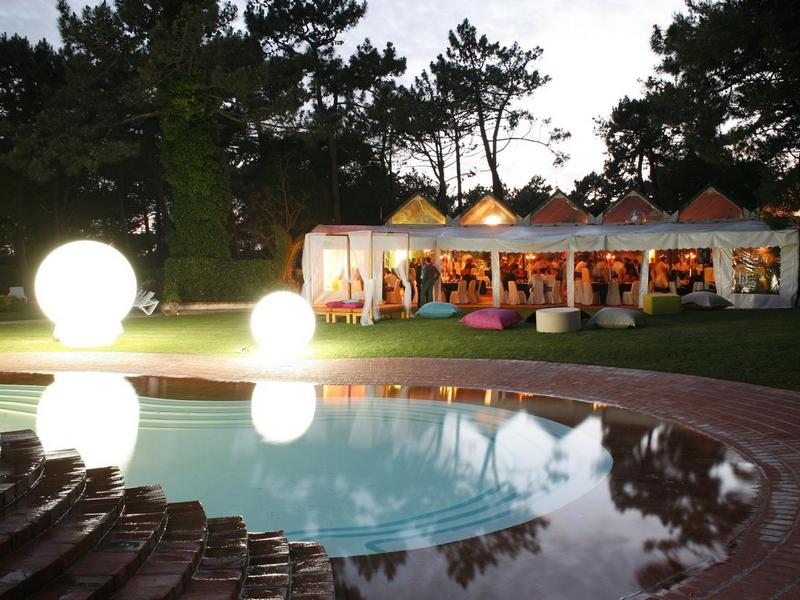
Martinhal
The Martinhal Cascais is a 5-star hotel great for family holidays. Set in a mist of greenery overlooking the beach and 6km from the historic centre of Cascais it will for sure keep your kids happily entertained

The Albatroz Hotel
The Albatroz Hotel is a classic. A charming 5-star unit with a superb view of the Cascais Bay. With a swimming pool and a sunny terrace, it enjoys an ideal position in the center of Cascais.

Villa Vasco da Gama
Villa Vasco da Gama offers more modern accommodation with free bikes and free WiFi. Boasting an outdoor swimming pool, this property is centrally situated within walkable distance from all Cascais main attractions

Farol Hotel
This 5-star boutique hotel features a stunning sundeck terrace over the Atlantic Ocean and a lounge bar overlooks the saltwater pool.
What to visit in Cascais, an unforgettable town

 English
English





